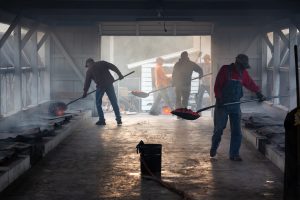 When most of us discuss policy, we are referring to the platform of a particular political party or a particular candidate. However, policy in the Government has a different meaning – it refers to the set of documented rules or recommendations people or groups within Government or entities outside of Government, such as companies, shall act. In the case of recommendations, or “instructional policies”, agencies have the option of following them. They are not required rules. Typically, these are considered best practices and the documents act as supportive reasoning for decision making. But with other policies, whether they be laws written by Congress, Executive Orders written by the President, or policies within Governmental agencies, they must be followed. All this makes sense….until….
When most of us discuss policy, we are referring to the platform of a particular political party or a particular candidate. However, policy in the Government has a different meaning – it refers to the set of documented rules or recommendations people or groups within Government or entities outside of Government, such as companies, shall act. In the case of recommendations, or “instructional policies”, agencies have the option of following them. They are not required rules. Typically, these are considered best practices and the documents act as supportive reasoning for decision making. But with other policies, whether they be laws written by Congress, Executive Orders written by the President, or policies within Governmental agencies, they must be followed. All this makes sense….until….
What happens when a policy that appears narrow in scope is suddenly realized to create a ripple effect that creates issues for another group or interferes with another existing policy? Across the 2.4 million executive branch workers, there are an enormous number of policies and you can probably extrapolate how a web of confusion can easily develop. But the question today centers on how these policies can not only affect the interpretation of other policies but also how they can create big challenges in individual towns.![]()
When rules are put in place to “improve” a situation in one area of the nation or in one industry, it must then be followed by all states or companies. However, what about the ones for whom it may not be an improvement? If they don’t have the same issues to deal with, how will they ensure they follow the policies? And more importantly, how will they do it in a way that doesn’t significantly affect profit? More importantly, how does all of this affect the people who live in towns that depend on these work opportunities?
The way we’ve always dealt with these issues is to constantly update policies based on new information brought typically by representatives from those areas or from lobbyists in the affected industries or locations. However, can we do a better job? Can we a) better account for the differences across our states at the outset and b) can we recognize the need to, more often than not, make changes slowly and with intention? For example, perhaps for safety reasons, a new policy has to be enacted immediately. Or maybe that’s true for only some areas or people. But the part that’s oftentimes missing is the future planning piece. In this case – are we changing the way we educate the youngest people in these affected towns to ensure that the next generation is prepared for future employment? Or do we stop at the point of making rules, more rules, continuously changing rules?
A common mantra I share widely is: When you present people with a plan, they become your critics but if you include them in the solution, they become your champions. Perhaps we could do a better job of including everyone in the solution building rather than reserving those decisions and input for people in office. Perhaps if we crated conduits for input and opportunities for transparency, we’d find our solutions to be more accurate, responsive, inclusive, holistic, and proactive. Perhaps we’d be able to unify and connect our people toward common solutions and plans rather than divide us to fight over winning an outcome that favors some rather than supporting all. We can do better – we just need to consider problems from different angles and more holistically.
